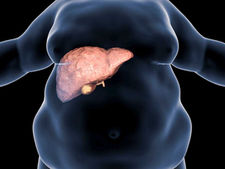🔺 Liposuction Turkey 2024 Prices? Mugla Visceral Fat: The Ignored Fact About Abdominoplasty and Liposuction Surgeries, What is Visceral Fat? Burning Visceral Fat, Foods That Reduce Belly Fat
- Taner Dursun

- May 22, 2024
- 6 min read

Liposuction Price in Turkey
ABDOMINOPLASTY AND LIPOSUCTION
THE FACT THAT IS IGNORED IN SURGERY (Liposuction)
VISCERAL OIL
Abdominoplasty and liposuction body contouring surgeries are becoming increasingly popular. In addition to the increase in the number of patients lying on the operating table, the number and variety of energy-based devices assisting the surgeon in fat removal and liposuction techniques are gradually growing the market in this field. In fact, compared to all other branch doctors, plastic surgeons may not understand the importance and physiopathology of the reality under the iceberg in front of their eyes, namely the reality of visceral fat, although they examine their patients naked. Sometimes the most difficult thing is not to see the truth in front of your eyes. As a plastic surgeon, I wanted to provide you with a perspective that will allow you to look at the event from a broader perspective rather than explaining the before and after of these surgeries in this article.
What is the importance of adipose tissue?
Fat tissue is very important for our body. Our body uses fat much more effectively than carbohydrates, simple and complex sugars. Brain tissue is mostly made up of fat. Cholesterol, a type of fat, provides cell fluidity; it is not only in the structure of bile fluid, but also serves as a building block for many hormones. In our digestive system, the stomach, gall bladder and pancreas are the organs that digest fats and proteins. Carbohydrates, on the other hand, are digested by enzyme-level compounds. This difference alone best explains the importance of fats and protein for our metabolic health.
How many types of fatty tissue are there?
In our body, the fat tissue above the subcutaneous membranes is called 'subcutaneous fat tissue' and is metabolically inactive. It is used as an energy source and fat storage. The goal of liposuction and tummy tuck is to remove this fat tissue.
The other type of fat tissue is metabolically active 'visceral fat tissue'.
What is visceral fat tissue?
Fat that is located deeper than subcutaneous fat tissue, especially in the posterior waist and lower abdomen, and continues around the intra-abdominal organs is called 'visceral fat' (Figure 1). To define it more clearly; it is a very different form of fat storage accumulated around the intra-abdominal organs such as the liver, stomach, pancreas and especially the lower intestine and kidneys, and mostly in the lower waist regions. It often continues into the muscles surrounding the body, causing a condition we call intramuscular marbleization. It is a fat that occurs secondary to stress and chronic inflammation in our body. It acts as a protective barrier to trap food-borne inflammation, especially from our intestines, in that area. Visceral fat tissue actually plays a very important role for our body by trapping toxic and inflammatory metabolites in a vascular-poor network in the abdomen and lower lumbar regions. It is a harbinger of a syndrome that is often associated with metabolic syndrome in the body: hypertension, high blood sugar, hidden insulin resistance, hyperlipidemia, hypertriglycemia, hypercholesterolemia, type 2 diabetes, coronary heart disease, polycystic ovary disease, Alzheimer's, cancer, autoimmune diseases, skin disorders, weakness, fatigue. These fat plans are associated with metabolic health. Visceral fat itself is associated with metabolic syndrome because of these toxic metabolites rather than its fat content.

Figure 1 : In the abdominal section above The fat tissue indicated by red arrows on magnetic resonance imaging - appearing white and densely visible around the intra-abdominal organs - is visceral fat tissue.
How many types of body fat are there?
-Fat under the skin, fat inside the abdomen, i.e. overweight and in poor metabolic health (FOFI-Fat Outside Fat Inside)
-Thin under the skin, fat inside the abdomen, i.e. thin and matabolically unhealthy (TOFI-Thin Outside Fat Inside)
-Fat under the skin, lean inside the abdomen, i.e. overweight and in good metabolic health (FOTI-Fat Outside Thin Inside)
-Thin under the skin, lean in the abdomen, i.e. lean and in good matabolic health (TOTI-Thin Outside Thin Inside)
As a result, knowing which form of body fat you have will lead to decisions that will affect your long-term health and make you make radical decisions rather than the decision of surgery that will shape your body form. Being thin does not mean that your metabolic health will be good, nor can we say that every overweight person is metabolically unhealthy. Plastic surgeons should approach their patients with this awareness and offer their patients a treatment plan that will create the best long-term aesthetic and metabolic health for their patients.
How is visceral fat measured?
During the examination, visceral fat should be suspected in case of fat in the lower waist area as well as abdominal distension. Visceral fat should be suspected in case of fat in the lower waist areas in addition to intra-abdominal distension. Blood sugar, insulin resistance, 3-month glucose levels, liver enzymes and kidney function as well as lipid profiles should be measured with detailed blood analysis. The most striking result is magnetic resonance imaging (MRI) of the abdomen without contrast. On MRI examination, the amount and density of fat tissue should be evaluated and the presence of marbling of fat tissue, especially in the abdominal muscles, should be examined. This finding is a very valuable finding for metabolic syndrome together with the values in the blood value results and is a very dangerous condition that 'doubles the overall risk of death' in the long term.
How do I reduce my visceral fat?
Visceral fat can mostly be reduced by dietary and lifestyle changes. Plastic surgeries are ineffective in this regard. Carbohydrates and especially refined carbohydrate intake should be reduced and packaged processed foods should be avoided. Liquid vegetable oils should be reduced due to the inflammatory omega 6 fatty acids they contain. Fast food and carbonated and sugary drinks should be avoided.
As a lifestyle change, visceral fat can be reduced by doing 'high intensity exercise'. The aim of these exercises is to run short distances in a very short time in a way that will leave you out of breath. The aim here is to trigger intramuscular oxygenated respiration and not to allow oxygen-free respiration. In fact, if you make a good observation, you will see that all children are running, playing, jumping, in fact doing this type of exercise. High-intensity exercise is also the best type of exercise that improves muscle tissue and reduces intramuscular fat. It is a fact that short distance runners have the best physique and muscle mass. I think we as adults have lost these habits and we are unable to maintain our health and fitness because we are overly emotional and engage in high-calorie, low-nutrient pleasure eating behaviors. Most of us have forgotten the last time we ran.
How many types of body fat are there?
As a result of the blood and soft tissue MRI studies, one of the following four types of body fat will be detected in you.
In order;
-Overweight under the skin, fat inside the abdomen, i.e. overweight and in poor metabolic health (FOFI-Fat Outside Fat Inside)
-Thin under the skin, fat inside the abdomen, i.e. thin and matabolically unhealthy (TOFI-Thin Outside Fat Inside)
-Fat under the skin, lean inside the abdomen, i.e. overweight and in good metabolic health (FOTI-Fat Outside Thin Inside)
-Thin under the skin, lean in the abdomen, i.e. lean and in good matabolic health (TOTI-Thin Outside Thin Inside)
As a result, knowing whether you are FOFI or TOFI, FOTI or TOTI, will create an awareness that will affect your long-term health and cause a lifestyle change that will enable you to make radical decisions rather than a surgical decision that will shape your body form. Plastic surgeons should approach their patients with this awareness and offer their patients a treatment plan that will create the best aesthetic and metabolic health for their patients in the long term.
Sincerely.
Kind regards..
Dr. Sabahattin KANDAL
Plastic, Reconstructive and Aesthetic Surgeon
Note: We offer accommodation in our Akyaka Yücelen Hotel for our patients coming from all surrounding provinces such as Istanbul, Izmir, Ankara, Denizli, Aydın and Antalya, before and after the treatment service in our hospitals. Turkey, UK England, Deutschland, Germany, Netherlands, Belgium, Dubai, Austria
Liposuction Price in Turkey ?





-04.png)
-06.png)
-05.png)
-08.png)
-07.png)
























